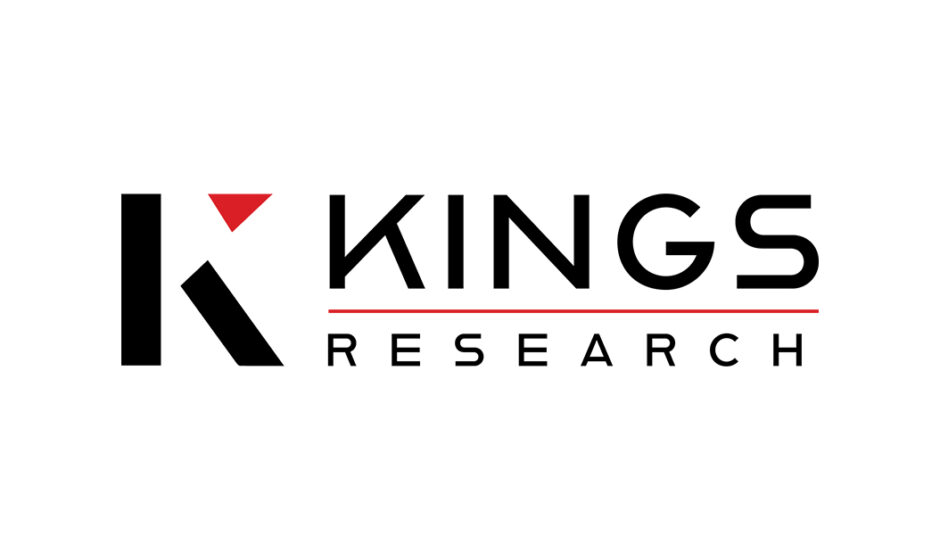The global Distributed Energy Resource Management System (DERMS) market is evolving rapidly, driven by a growing demand for energy efficiency, smart grid integration, and the rising deployment of renewable energy sources. According to a recent market study by Kings Research, the DERMS market was valued at USD 1,883.7 million in 2022 and is expected to reach USD 5,346.4 million by 2030, reflecting a robust CAGR of 16.07% over the forecast period of 2022 to 2030. This surge underscores the importance of advanced energy resource management systems in building resilient, responsive, and sustainable power grids globally.
Market Overview
The DERMS market has seen rapid adoption in recent years as energy landscapes shift away from centralized systems to more decentralized, customer-centric models. These systems are critical for managing distributed energy resources (DERs) such as solar PVs, wind turbines, battery energy storage, electric vehicle (EV) chargers, and demand response programs. The increasing need to integrate and optimize these assets has created a fertile environment for DERMS solutions.
Key market drivers include:
-
The global transition toward renewable energy and net-zero emissions
-
Increasing electricity consumption across residential, commercial, and industrial sectors
-
Growing need for real-time grid monitoring, automation, and energy reliability
-
Rising governmental support and policy incentives for smart energy infrastructure
-
Technological advancements in software platforms, AI, and IoT integration in energy management
Furthermore, as countries worldwide move to decarbonize their power grids, DERMS has emerged as a foundational technology to enhance grid flexibility, reduce operational costs, and maintain system reliability.
Competitive Landscape
The global Distributed Energy Resource Management System market is highly competitive and features a broad array of both established players and emerging innovators. These companies are strategically enhancing their portfolios through partnerships, R&D investments, acquisitions, and cloud-based software upgrades.
Some of the key players in the DERMS market include:
-
Siemens
-
Schneider Electric
-
General Electric Company
-
Mitsubishi Electric Corporation
-
Hitachi Energy Ltd
-
Emerson Electric Co.
-
Itron Inc.
-
Enel X S.r.l.
-
Open Access Technology International, Inc.
-
EnergyHub
-
Honeywell International Inc.
-
Oracle
-
Uplight, Inc.
-
Eaton
-
CGI Inc.
These companies are actively engaged in expanding their market share by offering comprehensive DERMS platforms that combine analytics, monitoring, and optimization tools. Their strategies also focus on integrating AI-powered forecasting, cloud computing, and real-time control to meet the evolving demands of utilities and end-users.
Segmental Analysis
The DERMS market report offers valuable insights into the most lucrative and high-growth segments, enabling stakeholders to identify profitable investment areas.
By Component:
-
Hardware
-
Software
-
Services
The software segment holds a significant market share due to increasing demand for digital platforms that enable real-time energy analytics, control, and monitoring.
By Software Type:
-
Analytics
-
Control & Optimization
-
Monitoring & Management
The control & optimization sub-segment is witnessing notable growth as utilities prioritize peak load management, voltage regulation, and demand-side response.
By Application:
-
Energy Storage
-
Electric Vehicle Charging
-
Renewable Energy Integration
-
Grid Services
The renewable energy integration segment is poised for accelerated growth, driven by solar and wind deployment worldwide, requiring smarter grid-balancing tools.
By End-User:
-
Residential
-
Commercial
-
Utility
Utilities dominate the market due to their need to manage increasing DER penetration while maintaining grid reliability and compliance with regulatory standards.
By Deployment Mode:
-
Cloud-Based
-
On-Premise
Cloud-based deployment is rapidly gaining momentum, offering scalability, cost-efficiency, and enhanced data accessibility for real-time decision-making.
Regional Insights
The Kings Research report presents a detailed regional outlook that helps businesses pinpoint region-specific growth opportunities and better understand global market dynamics.
-
North America currently leads the DERMS market, driven by the early adoption of smart grid technologies, high renewable penetration, and robust utility investments. The U.S. in particular is setting benchmarks in decentralized energy adoption and grid modernization.
-
Europe follows closely, with countries like Germany, the UK, and France embracing clean energy targets and advanced energy monitoring frameworks. EU-wide energy directives are catalyzing the uptake of DERMS platforms for better energy resource coordination.
-
Asia Pacific is expected to witness the fastest growth rate, led by China, India, Japan, and South Korea. Rapid urbanization, government-funded clean energy initiatives, and increasing electricity demand are fueling this expansion.
-
Latin America and the Middle East & Africa regions are emerging as promising markets with growing investments in renewable energy and digital grid infrastructure, although they currently account for a smaller market share.
Navigating Market Challenges
While the DERMS market outlook remains optimistic, businesses must also navigate key challenges such as:
-
Complex integration of legacy grid systems
-
Evolving regulatory standards and compliance requirements
-
High upfront costs of advanced DERMS platforms
-
Cybersecurity and data privacy concerns with increased digitalization
The Kings Research report provides an in-depth risk analysis to help companies proactively mitigate these issues and ensure smooth implementation of DERMS solutions across varying grid topologies.
Conclusion
The global Distributed Energy Resource Management System market is on a transformative journey, reshaping how energy is generated, distributed, and consumed. With robust growth projections and widespread adoption of decentralized energy solutions, the future of the DERMS market looks highly promising.
Industry participants, investors, and stakeholders can leverage the insights from the Kings Research report to develop data-driven strategies, drive innovation, and strengthen their position in a fast-evolving global energy ecosystem.
For more information and to access the full report, visit: Kings Research – DERMS Market Report



